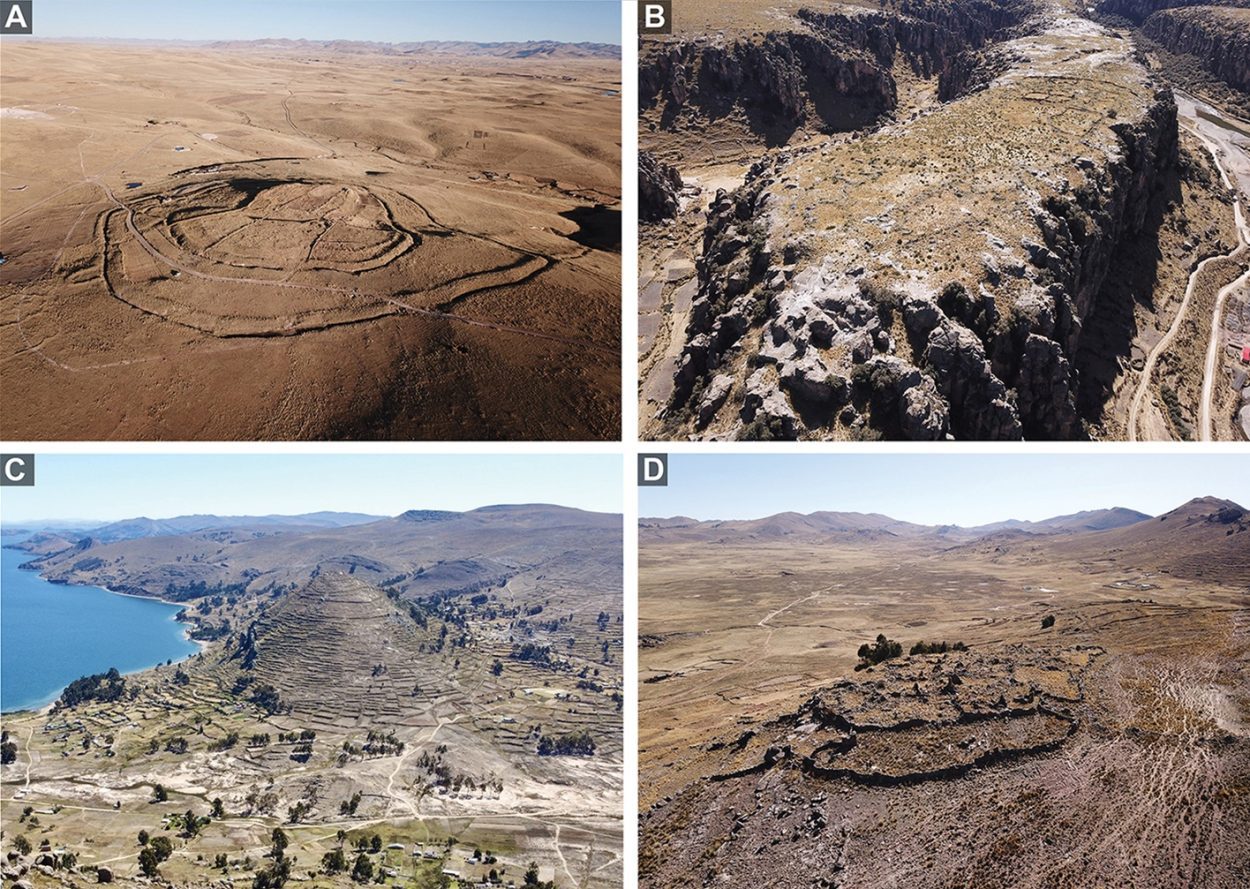A new study, published in the journal Antiquity, uses satellite imagery to survey hillforts known as pukaras in the Andean highlands.
Pukaras, meaning fortress in both Quechua and Aymara, were predominantly built on natural barriers such as hills and ridges during the Late Intermediate Period (AD 1000–1450).
Previous studies suggest that the necessity for these fortified sites arose from social and environmental circumstances, precipitating a period of conflict during the LIP.
What remains unanswered is the full extent and intensity of pukaras construction and distribution, which in part is limited by the difficult terrain and large spatial coverage. In addition, details on their size, defensibility, and density of residential and non-residential occupation are vague due to a bias towards studying the large, densely occupied pukaras.
The study authors used the results of three complementary systematic satellite survey projects, supplemented with targeted ground-checking and previous field research to reveal new insights into the pukaras phenomenon.
The study area covered 151 103km2 of the southern Andean highlands and identified 1249 high-confidence pukaras in the satellite imagery.
According to the researchers: “Pukaras coded as non-residential are surprisingly frequent; they are present throughout the study region in only slightly smaller numbers (n = 567) than residential pukaras (n = 682).”
The results also indicate that pukaras are densely concentrated in places such as the Lake Titicaca Basin and the Colca Valley, but also in substantial concentrations in parts of the south-central Andes.
In contradiction to the accepted narrative of defence, pukaras were also found in extremely high-elevation zones and areas where defensible land forms are absent.
The authors conclude that the survey demonstrates significant variation in the density of pukaras, raising important questions about the underlying social, political, economic, geographic or environmental contexts that propelled pukara construction in some regions and deterred it in others.
Header Image Credit : Antiquity
Sources : Antiquity – A new view of hillforts in the Andes: expanding coverage with systematic imagery survey. https://doi.org/10.15184/aqy.2023.178





